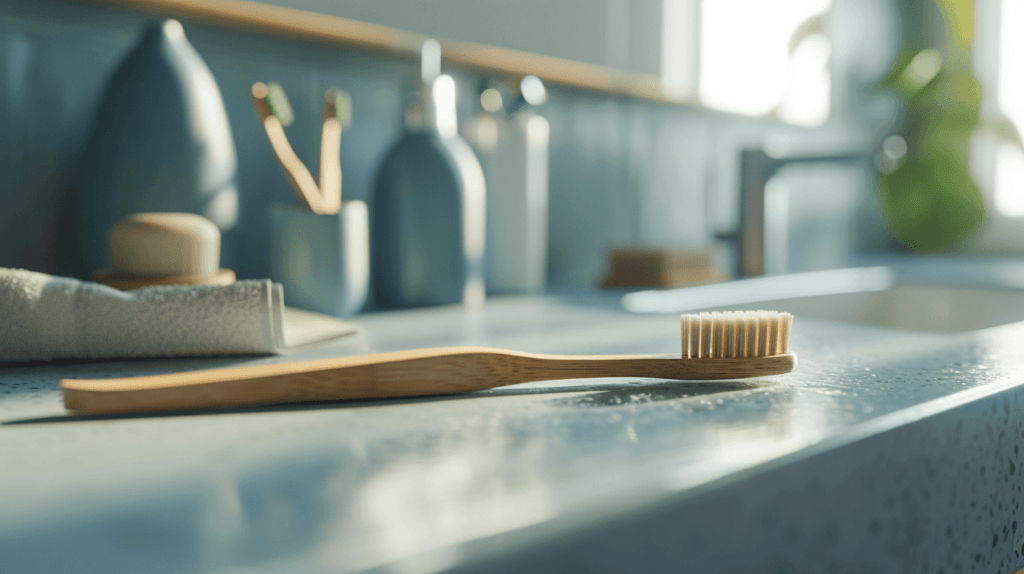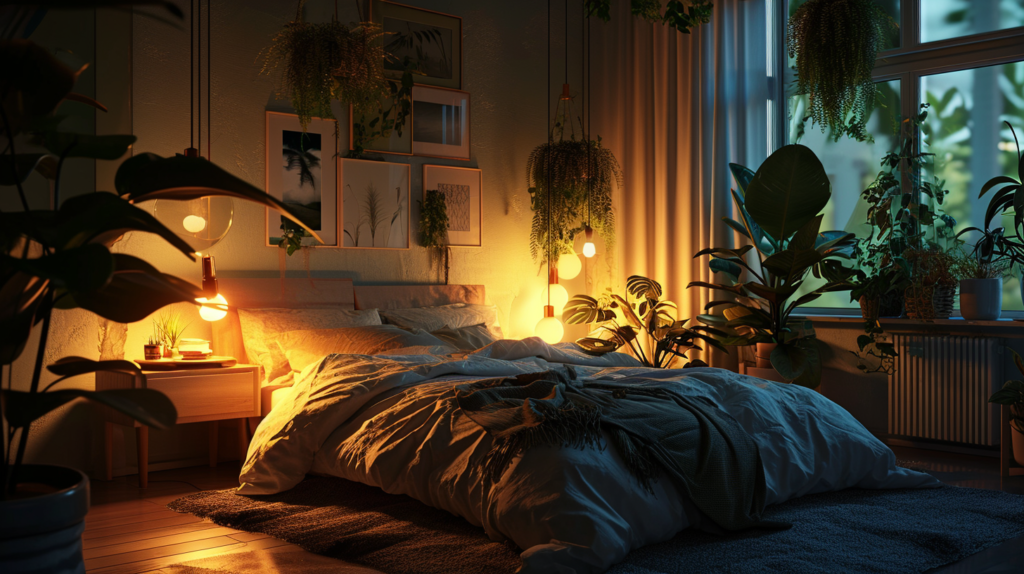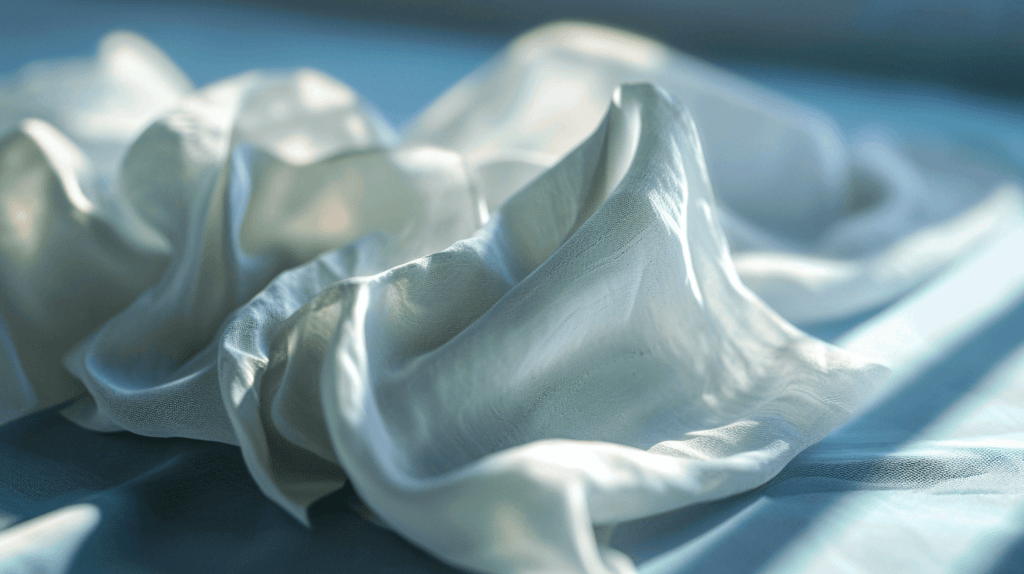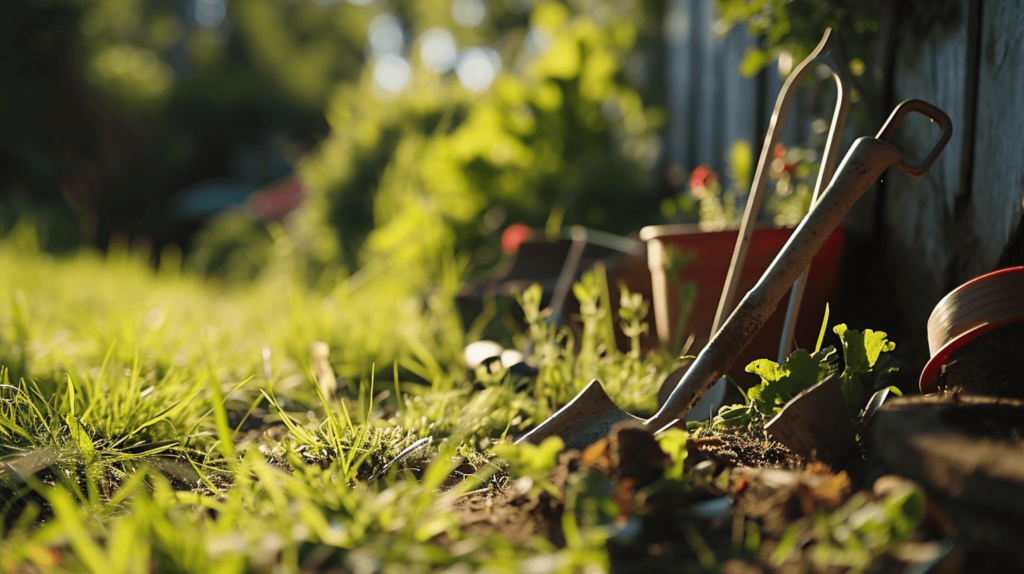As an advocate of green living, I'm trying to continually learn how to reduce my environmental footprint.
The most recent IPCC report makes it clear that we are on our way to climate catastrophe unless we begin our journey to sustainable living.
The start of my journey was the creation of the HankyBook, a sustainable solution to facial tissue waste. It opened my eyes and I started to see my home through a new lens - I was producing so much waste without even realizing it.
I made a decision to try and get as close as I could to a zero-waste home - without compromising (too much) on comfort. We are lucky to live in a time where there are so many great reusable, eco-friendly alternatives and methods to adopt for waste-free living - some of which are even better than what we used before!

From my learnings, I have gathered 65 easy tips (so far) to move towards a waste-free home and becoming a part of the zero-waste lifestyle movement. Here's some much-needed how-to advice on sustainable living as well as reducing your environmental footprint that even the busiest people can implement!
Refuse – Household waste starts with our buying decisions. Learn to say no, especially to plastic, single-use, disposable goods. Buy less stuff that you don't need, and for the stuff you need, try to buy in bulk.
Reduce – If there are no other alternatives to any harmful, wasteful, or non-recyclable chemicals, buy less of them. Look around for alternatives, for example, look into switching to homemade natural cleaning products instead of harmful chemical-based commercially available brands.
Reuse – Instead of buying new things when they break, look to repair them first. Upcycle things that you would ordinarily throw away. If you have to dispose of things, look to give them away or sell them online. Buy at thrift stores where possible.
Recycle – These days more people are making a habit of separating their recyclables from throwaway trash. Getting into the habit is the hardest part, but once you do it becomes as natural as anything.
Rot – Compost what you can. Buy products that naturally biodegrade. Cardboard packaging can be composted, as well as food scraps. With the right equipment, it's also possible to compost your pet waste that would otherwise toxify the water supply or your garden.
It's the packaging of shampoos and conditioners that are harmful to the environment. So either go zero waste, or zero packaging. If you're crafty, check out this step-by-step guide to making your very own shampoo and conditioner that keeps your hair healthy and doesn't harm the planet. If you're not feeling handy, I tested and reviewed the best zero waste shampoos and the best zero waste conditioners.
The ultimate “use once and throw away” item in your bathroom is toilet paper. There are many options to replace wasteful toilet paper in your bathroom, from tree-free or zero-waste recycled paper. Increasingly, more people are using water-efficient bidets as an alternative. A few squirts and a dab dry of your tush, and you’re refreshed and good to go with just the barest amount of disposable paper used.
Make sure that the wrapping of your favorite soap brand is biodegradable, compostable, or recyclable. Try and avoid buying soap, body wash, or liquid hand soap that comes in plastic bottles with a pump nozzle. Instead, shop local stores (or online if you don’t have any outlets in your area) for soap that comes in biodegradable packaging or has a refill option.
We're so used to plastic-based loofahs that many of us take it for granted that there is such a thing as a natural loofah. A natural loofah is sustainable because it comes from the luffa plant. At the end of its life, it can be composted.
When it comes to exfoliating your skin, there are several natural remedies that can save you money. Items such as coffee grounds, orange peels, and oatmeal can be processed in the comfort of your home to be super healthy exfoliating elixirs.
Deodorant is another common bathroom product that has several different plastic components, all of which would more than likely end up going straight to the landfill. Luckily there are many zero-waste deodorants on the market these days. These products tend to be more eco-friendly; minimal packaging, vegan-friendly, non-toxic, and cruelty-free.

Over 90 billion plastic toothbrushes get thrown away annually. A sustainable solution to plastic toothbrushes is to use bamboo instead. As a bonus, bamboo toothbrushes are compostable (if you remove the bristles). Smile: you're one step closer to a zero-waste life!
The main problem with toothpaste is the plastic tube that it comes in. There are a variety of tooth powders and toothpaste tabs that you can use to eliminate the wasteful packaging that toothpaste comes in.
Floss is a string of plastic, shipped in a plastic container. If you’re aiming for a zero-waste bathroom, seek more sustainable options that have corn, polyester, or silk filaments, and are coated in natural oils.
The mouthwash that you get from the store is bad for the environment in two ways.
The ingredients, chemicals, dyes, and additives that you dispense down the drain can end up in the water cycle
The single-use plastic containers that they come in clog up landfills
Zero waste mouthwash can be a soluble tablet or a concentrated refill pack. Whatever your preference for an alternative mouthwash, making that simple change can go a long way to a healthier planet (and keeping your breath fresh!)
Disposable blades aren't recycled. A better option is to use a safety razor or a straight razor. Not only do they look cooler, but they benefit the environment too. The steel blades are recyclable, and because you'll get many more uses out of each one, it will save money.
There are many more sustainable and reusable options for Q-tips on the market. Some of the products use medical silicon, or other tough, durable, and washable materials that can be used and washed after use, while others are bamboo ear swabs that are compostable at the end of their life. Either option is far better than contributing to over 15 billion Q-tips that end up in the environment each year.
Reusable menstrual pads are an excellent substitute for one-time-use pads. They are way more sustainable, comfortable, unique AND economical.
I’ve made a list of the best reusable pads. I've also written a guide on how to use reusable pads, a beginners guide to washing reusable pads, and even a step-by-step guide to making your own reusable menstrual pads.
Beauty was skin deep but it's getting deeper with a growing focus on environmentally friendly, natural makeup options. I put together a list of my favorite zero waste eco-friendly makeup brands and was surprised at how many awesome options are available these days to look after the planet without compromising on style!
Are you using a cruelty-free blush, but a rabbit hairbrush? Most people use animal product brushes because the idea of a synthetic brush just seems so cheap and/or lacking. Almost as if it would not do the job. That's why I did a deep dive into the best eco-friendly makeup brushes - I wasn't disappointed and you won't be either.

Single-use products are the worst, especially when there are reusable alternatives. Why not make your own DIY reusable makeup remover pads? Or, if you're not super crafty, check out my list of the best reusable makeup remover pads online that I have found on the market, to suit your zero-waste lifestyle.
If you have a plastic hairbrush or comb, you're not only contributing to the plastic problem, but you're also doing your hair a disservice. A wooden brush stimulates the follicles and the natural oils from your scalp to the tip of your hair.
Say goodbye to moisturizers from plastic pump bottles, or plastic jars sealed in cellophane.
There are increasingly more products that are cruelty-free, recyclable, and zero waste. There are even recipes to make your own moisturizers using easily sourced raw materials from health stores.
You can clean without using products that have harmful chemicals. Shop for zero-waste products to clean your bathroom and surfaces, like toilet cleaner, surface cleaner, stain remover, and anything you need to keep your bathroom space sparkling clean and sanitized.
You can even make your very own spray-on vinegar-based cleaning product that is effective on all surfaces.
Plan around the bare necessities. Excess furniture is wasteful and it attracts and traps dust. Opt for sustainable wood or certification from the Forest Stewardship Council (FSC). The same applies to your living room or any space that needs furnishing.
When you're looking for that perfect lamp for your bedroom, first start at second-hand or antique shops. They definitely don't make them like they used to, that is, except for the bulb, which can now be energy-efficient LED lighting.

If you're going for cotton, go organic. Look out for other labels that certify your bedding as being sustainable, like GOTS certification and fair trade. Other materials, like bamboo, do a better job of thermo-regulation of your body in the cold and the heat. As bamboo is a fast-growing crop, it's generally a less intensive process to make. If you want to learn more about bamboo pillows, I've got you covered.
Mattresses are a once-in-a-blue-moon purchase, so if you're buying one, make sure that it's not harmful to you. The certification you're looking for is the OEKO TEX standard 100, which certifies sustainability and the safety of humans all along the supply and manufacturing chain.
Before you even consider whether a new purchase is organic, GOTS certified, or Fair Trade, the most important question you should be asking is "Do I REALLY need this?" Instead of trashing your old clothes, you could repurpose them. If you REALLY need to clear your closet space, look to donate rather than dispose.
Arrange living room furniture to increase light and air in your space. It's far better to read with natural light and be cooled with a natural breeze than to read by light and be fanned by air conditioning. Plastic plants, aside from being tacky, are just... no. Just don't. Ew.
There are dozens of everyday uses for a handkerchief and best of all, they are reusable so you can ditch the facial tissues. If you want to try an evolution of the humble handkerchief, I invented HankyBook, a machine-washable handkerchief in a book shape to stop germs from spreading.

One day soon, everything will be rechargeable. Until that day, it's better to use rechargeable batteries for your remote controls than disposable ones. If you have to dispose of your flat batteries, dispose of them properly at a drop-off point. Don't throw them in the trash.
TVs and other electronic equipment on stand-by mode aren't the same as when switched off. In fact, it uses a lot more power than you'd think, considering it's just a blank screen. Make a habit of switching these appliances off at the plug point before you go to bed.
VOCs, or Volatile Organic Compounds, are found in paint, coatings, strippers, wood sealers, and wood preservatives. VOCs make applying the paint easier, but they're also carcinogens as well as harmful chemicals. When it's time to paint, choose VOC-free coatings.
Any appliance, from TVs to washing machines and everything in between in every room can be energy efficient. These appliances save water and have a lower energy running cost, so they save you money and reduce your carbon footprint.
Pillows, blankets, cushions, or throws are the little things that add accents and your personal style to your living room. Next time you buy these flourishes, make sure that the fabrics are sustainably sourced.
If you live in a colder climate, keeping your boiler or furnace maintained increases the heating efficiency. Before every winter, look for leaky air ducts or other wear and tear that can waste heat and energy. If you're replacing your furnace, check whether it's certified by the EPA.
I always keep a bunch of reusable utility cloths handy for cleaning up spills, household chores, or for any other reason that may pop up from time to time. The main reason for this is to break the paper towel habit. A quick look around your house and you'll easily be able to find items that you'll be able to upcycle into cloths or cloth bags that you can reuse.
Minimize packaging to enhance zero-waste living. Most stores have sections where produce, particularly dry goods like rice, seeds, beans, nuts, spices, flour, rice, and coffee beans, is sold by weight. This eliminates a lot of plastic packaging.
Researching local zero-waste lifestyle products and then visiting the local markets and stores that stock the goods is the most fun part of the sustainable journey. Oftentimes the best sustainable products are right under your nose - if that doesn't work, then you can cast your online.
Reusable, eco-friendly shopping bags are a must and can look really stylish too. I reviewed some of my personal favs with my guide to the best eco-friendly shopping bags. You can even make your own cloth bags to take to the farmers market or the bulk store.
Reusing old containers, creatively up-cycling objects into food storage, or making thoughtful buying decisions for your pantry are all positive proactive steps towards zero waste living. Here are the best zero waste food storage options that I've found so far.
At first, it seems like a mountain to climb, but taking it step-by-step I found that it was a fun and fulfilling journey to creating a plastic-free pantry. This is the story of why and how I created a plastic-free pantry for my zero-waste home.
What you can't consume or reuse? Compost. These days there is an array of kitchen and indoor composters on the market. If you can't afford to buy something, just having an outdoor area, some bare earth, and a source of nitrogen (grass clippings or manure), is enough to put nutrition back into the earth.
Chemical-based and plastic-packaged kitchen cleaners are yesterday's news. Switch to zero waste bulk soap or dish soap blocks.
Cleaning sponges are now plastic-free, and 100 percent compostable loofah alternatives are taking their place on the market. There are also bamboo dishwashing brushes that are effective and eco-friendly. If you have a dishwasher, buy your powders and tabs in bulk.
For a sustainable all-purpose kitchen cleaner alternative, you can make your own vinegar-based solution, or you can shop at green stores.
Silicone baking sheets take very little cleaning product after you use them. They're non-stick, and besides taking the hassle out of cleaning after you're done baking, they're long-lasting and sustainable.
Chemicals from plastic leeches into your food when you store it in the fridge. Plastic wrap is harmful to the planet, while wax wrap is wasteful and unsustainable.
Instead, use beeswax wrap as a natural alternative for as many foodstuffs as possible. They work as food storage to freeze, refrigerate, or pack your lunch.
Check out this guide to the best zero waste and plastic free food wraps, or if you want to DIY, our easy to follow method to making your own beeswax wrap.

Cheap cookware may be attractive in the short term, but will definitely cost you in the long run. A cheaper non-stick coating is not only toxic but will chip off before long. Stainless steel or cast iron pots and pans will last for decades.
In the manufacturing process, from the ease of use, to how long the utensils will last, wood is a far better option than plastic. Bamboo forests replenish very quickly, and there is no leeching of plastic and compounds into the food that you're preparing.
A zero-waste home also means not wasting food! Instead of throwing away food, freeze it before it goes bad. You may be able to use it in a soup or a stew later.
If you need to clean your microwave without chemicals, blitzing a cup of water for a few minutes will create steam that loosens any tough grime that accumulates on the inside walls of the microwave. Add a good squeeze of lemon before you microwave for added cleaning properties (and a better scent).
Even the toughest stains and grime can be removed from your oven with a spray of vinegar and a dusting of baking soda. Leave this mixture overnight to work its natural alchemy before wiping it down with a mild cleaning spray the next day.
Check out Craigslist, social media marketplaces, Goodwill stores, or online shops for new or barely used toys and accessories for your furry family friends. Just be sure to wash these thoroughly as the scent of previous pets could make your dog deeply suspicious.
You're only limited by your imagination, or your ability to Google DIY toys that can be made for your pets. Everything from braided old t-shirts to make a rope for your dog, to balled-up old socks for your cats to pounce on.

You can either buy a pet waste composter, or you can follow this guide to create your own DIY pet waste composting station. Please note: this compost can only be used for soil and flower beds, not for crops like fruit and vegetables.
Clay cat litter is unsustainable because of the wasteful and energy-inefficient process of mining clay. Natural substrate alternatives like pine or coconut are far more sustainable and eco-friendly.
Say no to plastic bottles. Check online for zero-waste dog shampoo bars. To keep their coats shiny and healthy, brush regularly with a bamboo dog brush.
Bamboo dog kennels are more sustainably sourced, even though they aren't the most chew-proof dog houses in the world. For that, a metal dog house will last many lifetimes. When you're buying, look for second-hand options, but scrub and wash it thoroughly to remove the scent of previous pet occupants. For dog beds, up-cycle old materials like pillows and blankets.
Create an area away from your home where you can sort your waste into three categories:
Glass bottles, jars, tins, and plastic bottles,
Food waste
Paper and cardboard
This makes it quick to sort and process, for example, compacting the cardboard waste by flattening the milk cartons, separating the plastic caps from the glass jars, etc.
When you're de-cluttering, think of what items you can up-cycle. What you don't need, offer on Facebook groups or donate to thrift stores. If you are going to dispose of things, use an eco-friendly junk removal company.
Check whether the old paint or chemical-based products that you no longer need or use are safe to dispose of in the trash. If not, a quick Google search will help you find the proper disposal location and process for each product.
Celery, romaine lettuce, bok choy, and scallions are easy to regrow from their discarded ends. Cut them two inches from the base, place them standing upright in a shallow bowl of water in an area that has access to ample sunlight, and a few days later they'll start to sprout. If you keep the water fresh, the plants can be transferred into potting soil for further growth.
You can harvest seeds from much of the fresh veg that you have in your kitchen. Scoop out the seeds from your fruit and veg and leave them to dry in a bright space for a few days on a dry cloth. Once they're dry, store them in paper enveloped in a dark place (like a drawer), or if it's the planting season, start planting. Do your research on Google to determine the right planting season and other tips to get the most out of your crop.
Hard-wearing quality and practical tools last longer than cheaper novelty ones. Second-hand stores or thrift markets have tools that would still be quality despite their age. It will also save you a few bucks to buy second-hand. If possible, repair rather than replace.

Garden sprinklers and watering with garden hose wastewater. Drip irrigation reduces water waste by up to 50 percent because it only wets the part of the soil in which the roots take hold. That produces less evaporation and water run-off, and less water waste.
Whether you buy or install one of many commercially available greywater systems, or whether you choose to implement your own method of saving and recycling water from your home for garden watering, every drop of water saved is valuable. Collecting rainwater when it rains is also a massive saving to piped water infrastructure and scarce water resources.
These days there are so many gorgeous makeup bags that are also sustainably made. I know because I tried and tested a bunch to come up with the 5 best eco-friendly make-up bags.
Technology is typically at the forefront of the zero waste movement, but technology has done a great job turning physical products (atoms) into software (bytes). Look at your cellphone - it has probably replaced dozens of real-world items. Paper -> pdfs and email. Actual maps -> map apps. Physical scanners -> scanner apps. Video recorders, cameras, radios, CD players, DVD players - the list goes on. The manufacturing, the supply chain, the packaging, the deliveries, and all the trash that we don't generate because of it.
So, before you buy an item, give a thought as to whether there is a digital version that could do the same thing.
I hope you've found these tips for a zero-waste home useful. A good life and green living are not mutually exclusive. The waste-free living movement is picking up pace! We were few, but now we are many - we've gone mainstream and I'm not complaining about that.
Got any other tips? I'm really happy to try them out and add them to the list. Waste-free living is an ongoing process so I will definitely be growing this list of tips in the months and years to come.